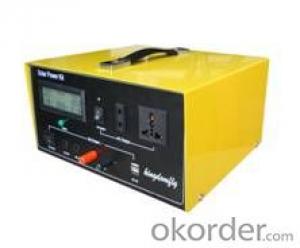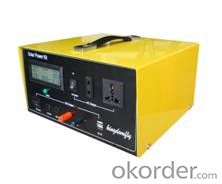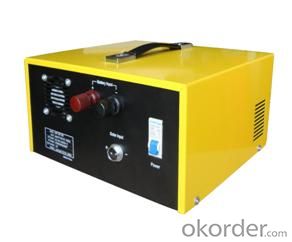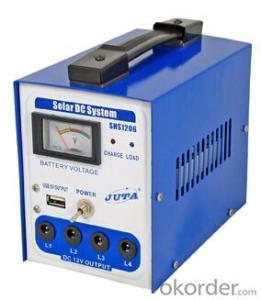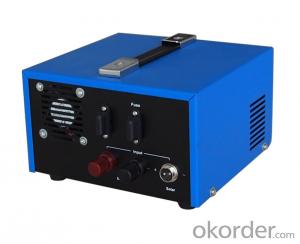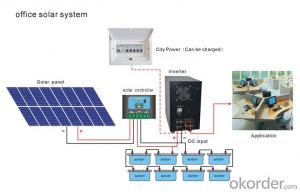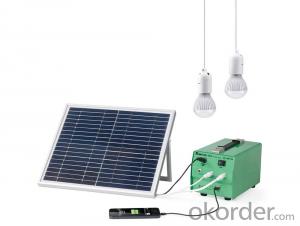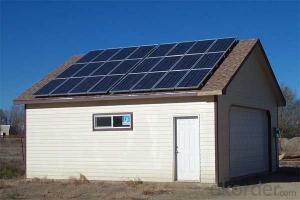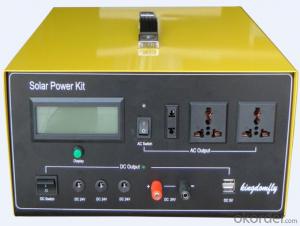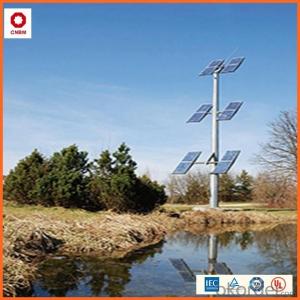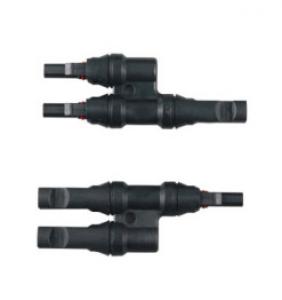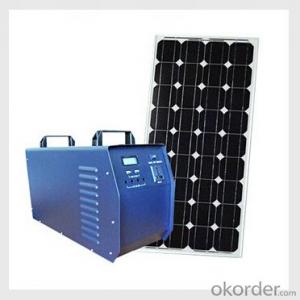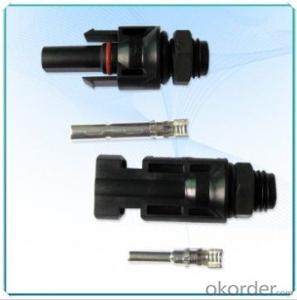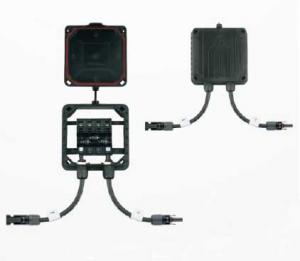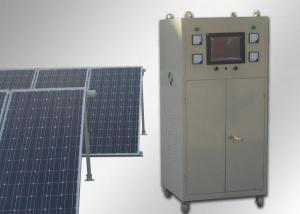Solar Energy Systems of Brevard Inc - SPK-500 Solar Power System for Home
- Loading Port:
- China main port
- Payment Terms:
- TT OR LC
- Min Order Qty:
- 3 pc
- Supply Capability:
- 10000 pc/month
OKorder Service Pledge
OKorder Financial Service
You Might Also Like
Main Information
KDF SPK_500 This product is high performance,family used portable solar power system,which can receive energy and store it in battery outside connected to SPK by solar energy on sunny day,and supplies electric power for varies appliances such as electric fan,lighting lamps, television, portable computer etc.It can supply power for both DC and AC electric application .It’s very helpful and useful for home electric supply.
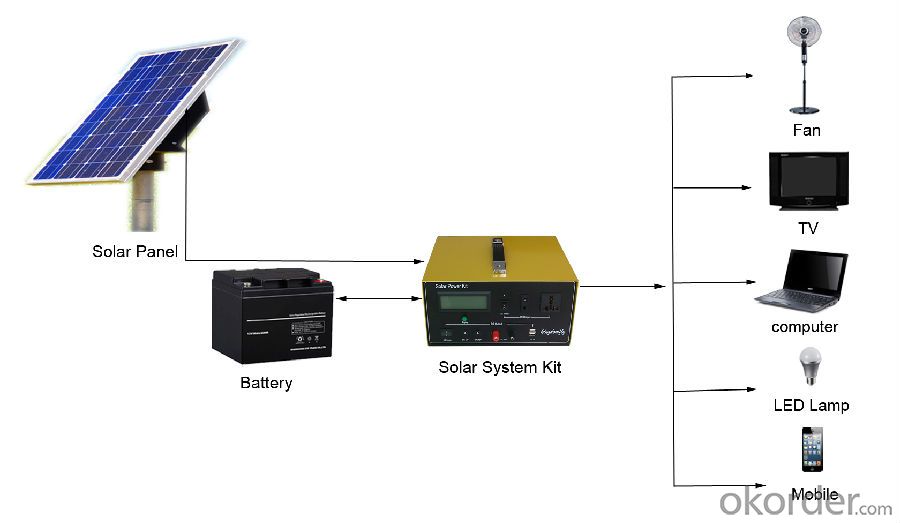
Features:
◆ Battery puts outside connected to the SPK for user to choose battery in recommended range, and easily to exchange battery.
◆ Both DC and AC output
◆ Solar Feedback Circuit Protection
◆ Output Short-circuit Protection
◆ Solar「+」「-」anti-access protection
◆ Output「+」「-」anti-access protection
◆ Over Charged Protection
◆ Over Discharged Protection
◆ Over Load Protection
◆ Over-Temperature Protection
Technical parameters
Specification | Value/Material | |
Item No. KDF | SPK_500 | |
Solar Recommended | Specification | Poly silicon |
Working Voltage/Power | 18V50W~300W | |
Battery Recommended | Rated Voltage/Capacity | 12V40AH~200AH |
Cycle Number | 80% Deep Cycle Number:500 70% Cycle Number:800 | |
Working Temperature | Short Period(one Month):-20~50℃ Long Period(Six Months):-10~45℃ | |
Charging Controller | Operating Voltage | 12V |
Input Voltage | 17.3V~21V | |
Input current | MAX:10A | |
Power Consumption | MAX: 5mA | |
Low Voltage Disconnect(LVD) | 10.8V | |
Low Voltage Reconnect(LVR) | 12.3V | |
High Voltage Discharge( HVC) | 14.6V | |
High Voltage Recharge(HVR) | 13.8V | |
Temperature Protection | 60℃ | |
DC Output | DC output & Application | USB 5V2A |
DC output & Application | DC 12V1*3A | |
AC Output | Output Wave | modified sine wave |
Input Voltage | 11V~15V | |
Output Voltage | 110V±10% | |
Output Frequency | 60Hz±2Hz/50Hz±2Hz | |
Rated Output Power | 300W | |
Maximum VA | 600VA | |
Maximum Efficiency | 88% | |
Temperature | 0-40℃ | |
Over Temperature | 60℃~70℃ | |
Low Voltage Alarm | 11V | |
Low Voltage Shut off | 10.5V | |
High Voltage Shut off | 16V | |
Package | Set size | 331*338*217mm |
Set N·W | 3.8kg | |
Set N·W | 4.6kg | |
LCD_Display
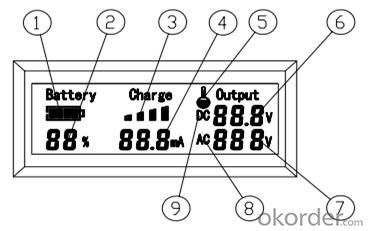
No. | Name | Function |
1 | Battery Icon | To show the Volume of the Battery |
2 | Date of % | To show the percent of the Battery |
3 | Charging Icon | To show the charging condition |
4 | Current | To show the value of charge current |
5 | Temperature Icon | Temperature Alarm |
6 | Date of Voltage | To Show the Value of DC output voltage |
7 | Date of Voltage | To Show the Value of AC output voltage |
8 | AC Icon | AC output |
9 | DC Icon | DC output |
- Q: Are there any disadvantages or limitations to using solar energy systems?
- Yes, there are a few disadvantages and limitations to using solar energy systems. Firstly, solar panels require a significant initial investment, making the upfront costs relatively high. Additionally, the efficiency of solar panels is dependent on factors such as weather conditions and geographic location, which may impact their energy production. Solar energy is also intermittent, meaning it cannot be generated during nighttime or cloudy days, requiring the use of energy storage systems or alternative power sources. Finally, the manufacturing and disposal of solar panels can have environmental impacts, although these are generally outweighed by the long-term benefits of using solar energy.
- Q: How do solar energy systems affect the carbon footprint?
- Solar energy systems significantly reduce carbon footprint. They generate electricity by harnessing the sun's energy, which is a clean and renewable source. This eliminates the need for fossil fuels, such as coal and natural gas, that release harmful carbon dioxide emissions when burned. By using solar energy, we can minimize greenhouse gas emissions and combat climate change.
- Q: Can a solar energy system be used in areas with high levels of snowfall?
- Solar energy systems can indeed be utilized in regions with heavy snowfall, despite the temporary reduction in efficiency caused by snow coverage and sunlight obstruction. Overcoming this challenge is achievable through various methods: 1. Opting for tilted panels: Installing solar panels at an incline allows snow to easily slide off, enabling the panels to consistently generate electricity. This approach is particularly effective when panels are set at a steeper angle. 2. Snow clearance: In areas experiencing frequent snowfall, periodic removal of snow from the panels may be necessary. This task can be accomplished either manually or through automated systems like brushes or heating elements that melt the snow. 3. Increased panel surface area: By adding more panels, the system can compensate for reduced efficiency during snowy periods. This ensures sufficient energy production even if some panels are covered in snow. 4. Utilizing net metering: In regions with heavy snowfall, net metering can be employed to offset the decreased solar energy production during winter months. Surplus energy generated during sunny periods can be exported to the grid, while energy can be drawn from the grid during lower production periods. 5. Incorporating battery storage: By integrating battery storage into the solar energy system, excess energy generated during sunny periods can be stored for use when the panels are covered in snow. This guarantees a continuous supply of electricity, irrespective of snowfall affecting immediate production. Though snowfall poses challenges for solar energy systems, they can still be effectively employed in snowy areas with proper design, installation, and maintenance. Technological advancements and innovative solutions continue to enhance the resilience and performance of solar energy systems in snowy conditions.
- Q: Are there any risks of electrical malfunction or failure with solar energy systems?
- Yes, there are some risks of electrical malfunction or failure with solar energy systems. One of the main risks is a faulty or damaged electrical connection, which can result in a loss of power generation or even electrical fires. Additionally, extreme weather conditions such as lightning strikes or strong winds can damage the solar panels or inverters, leading to a temporary or permanent failure of the system. Another risk is the degradation of solar panels over time, which can result in decreased efficiency and eventually require replacements. Furthermore, improper installation or maintenance can lead to system failure or electrical malfunctions. It is essential to ensure that solar energy systems are installed by qualified professionals and regularly inspected and maintained to minimize these risks.
- Q: Can solar energy systems be connected to the existing power grid?
- Yes, solar energy systems can be connected to the existing power grid. This is known as grid-tied or grid-connected solar systems. When connected, excess electricity generated by the solar panels can be fed back into the grid, allowing homeowners or businesses to earn credits or receive compensation for the power they produce.
- Q: Can solar energy systems be used for powering amusement parks?
- Yes, solar energy systems can definitely be used to power amusement parks. By installing solar panels, amusement parks can generate clean and renewable energy to meet their power needs. Solar energy systems can provide electricity for rides, lighting, and other facilities within the park, reducing the reliance on fossil fuels and lowering operational costs. Additionally, solar power can contribute to a greener image for the amusement park, attracting environmentally conscious visitors.
- Q: Can solar energy systems be used for powering electric car wash systems?
- Yes, solar energy systems can indeed be used to power electric car wash systems. By installing solar panels, the energy from the sun can be harnessed and converted into electricity to power the car wash equipment. This renewable energy source offers an eco-friendly and sustainable alternative to traditional electricity sources.
- Q: Can solar energy systems be used for powering electric vehicle solar charging roads?
- Yes, solar energy systems can be used to power electric vehicle solar charging roads. Solar panels can be installed alongside or on top of the roads, converting sunlight into electricity. This electricity can then be used to power electric vehicle charging stations located along the roads, allowing vehicles to charge their batteries while driving. This innovative technology can help reduce dependence on fossil fuels and promote sustainable transportation options.
- Q: What is the role of trackers in solar energy systems?
- Trackers in solar energy systems are responsible for increasing the efficiency and performance of solar panels by aligning them with the sun's position throughout the day. These devices track the sun's movement and adjust the angle and position of the panels to maximize the amount of sunlight they receive, ultimately generating more electricity and increasing the overall energy output of the system.
- Q: Can solar energy systems be used in countries with low sunlight availability?
- Yes, solar energy systems can still be used in countries with low sunlight availability. While it is true that solar energy systems rely on sunlight to generate electricity, advancements in technology have made it possible to capture and utilize even small amounts of sunlight efficiently. Additionally, solar energy systems can be designed to incorporate other renewable energy sources, such as wind or hydroelectric power, to supplement low sunlight availability. Furthermore, using energy storage systems, such as batteries, can help store excess energy during periods of low sunlight and release it when needed. Therefore, even in countries with low sunlight availability, solar energy systems can still be a viable and sustainable option for generating electricity.
Send your message to us
Solar Energy Systems of Brevard Inc - SPK-500 Solar Power System for Home
- Loading Port:
- China main port
- Payment Terms:
- TT OR LC
- Min Order Qty:
- 3 pc
- Supply Capability:
- 10000 pc/month
OKorder Service Pledge
OKorder Financial Service
Similar products
Hot products
Hot Searches
Related keywords
